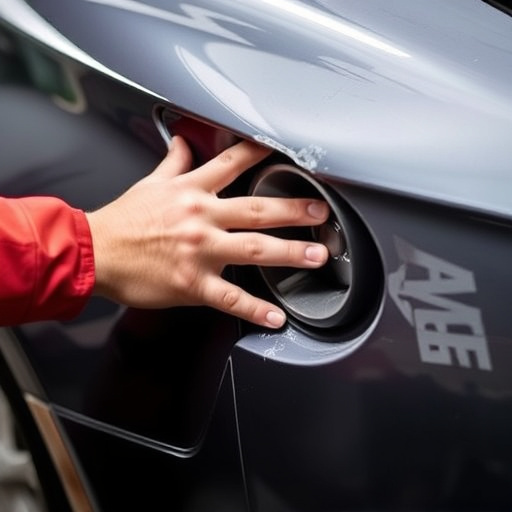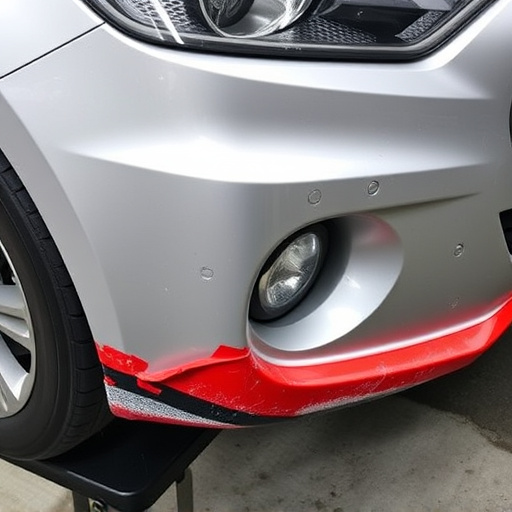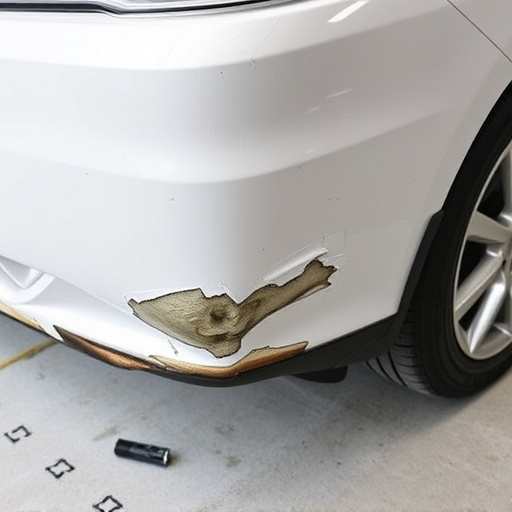Tesla vehicles' advanced technology is not glitch-free; issues with the body computer can cause problems like doors not locking. Solutions include a factory reset or software update, which require careful preparation, precise execution, and regular over-the-air updates to prevent glitches. Prompt attention to unusual noises and regular maintenance also minimize the need for resets. For persistent issues, visit a reputable auto body shop.
Tesla vehicles are renowned for their cutting-edge technology, but even these advanced systems can encounter glitches. One common issue is the Tesla body computer reset, which can lead to performance problems. This comprehensive guide delves into understanding and resolving these glitches, offering step-by-step instructions for a successful reset process. We also explore preventive measures and the crucial role of software updates in minimizing future disruptions, ensuring your Tesla remains a smooth and efficient driving experience.
- Understanding Tesla Body Computer Glitches
- Steps for a Successful Reset Process
- Preventive Measures and Software Updates
Understanding Tesla Body Computer Glitches

Tesla vehicles are known for their cutting-edge technology and innovative features, but like any complex system, they’re not immune to glitches. One such advanced component is the Tesla body computer, which controls various functions from door locks to climate control. When this computer experiences a glitch, it can lead to a range of issues, from minor inconveniences to more serious problems.
A software glitch in the Tesla body computer might manifest as unexpected behavior, such as doors that refuse to lock or unlock, unusual sounds, or even a complete failure to respond to inputs. These issues can be frustrating for owners and may require a Tesla body computer reset to resolve. Interestingly, many of these glitches are not unique to Tesla; they mirror problems found in other modern vehicles, including Mercedes Benz models known for their collision repair needs. Fortunately, with the right approach, like performing a factory reset or updating software, these glitches can be effectively addressed, ensuring your Tesla operates smoothly once again.
Steps for a Successful Reset Process

A successful Tesla body computer reset involves a systematic approach to ensure optimal results. Begin by preparing your vehicle for the process; this includes ensuring it’s parked in a safe, level area with adequate ventilation and the battery fully charged. This is crucial as a deep discharge could damage the electric vehicle’s (EV) systems. Next, gather the necessary tools and materials, including a laptop with compatible software, a diagnostic cable, and potentially a paintless dent repair kit for any external cosmetic issues.
The reset process itself demands precision. Connect the diagnostic cable to the Tesla’s OBD-II port, launch the dedicated software, and follow the on-screen instructions meticulously. This may involve selecting specific vehicle options, confirming the reset reason, and verifying the vehicle’s identification number (VIN). During this time, monitor the car’s computer system for any glitches or errors. If issues persist, consult a professional mechanic or Tesla service center, as they can provide expert guidance, especially regarding complex car body repair scenarios.
Preventive Measures and Software Updates

Regular software updates are crucial for maintaining a Tesla’s optimal performance, including its body computer functions. Tesla regularly releases over-the-air (OTA) updates that fix bugs, improve system reliability, and introduce new features. Staying current with these updates is essential to prevent glitches and potential issues with the vehicle’s body computer. Drivers can ensure they receive these updates by enabling wireless delivery through their car’s settings and connecting to a stable internet source.
In addition to timely software updates, certain preventive measures can be taken to minimize the risk of Tesla body computer resets or related glitches. Regular maintenance, such as checking tire pressure and seeking prompt assistance for any unusual noises or performance issues, can help avert problems that might trigger a reset. Moreover, should an issue arise, visiting a reputable auto body shop for expert diagnostics and repair is advised, especially for complexities beyond dent removal or minor cosmetic fixes.
In conclusion, addressing Tesla body computer glitches is crucial for maintaining optimal vehicle performance. By understanding common issues, following systematic reset procedures, and staying updated with software patches, owners can ensure their vehicles run smoothly. Regular maintenance, including a thorough reset process, prevents minor hiccups from becoming major problems, ultimately enhancing the overall driving experience. For any Tesla owner, keeping up with these simple yet effective solutions is key to navigating through potential software glitches.













